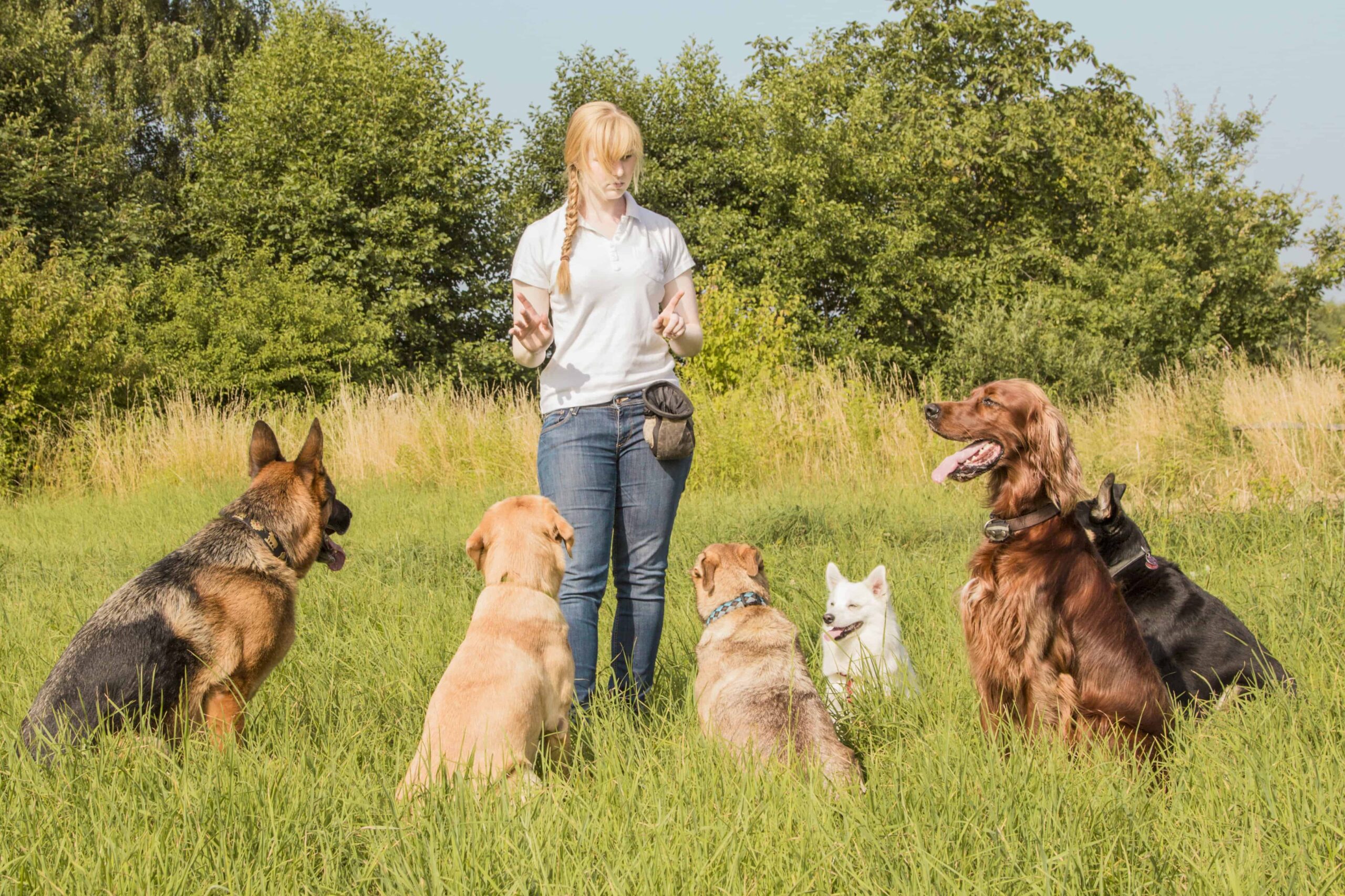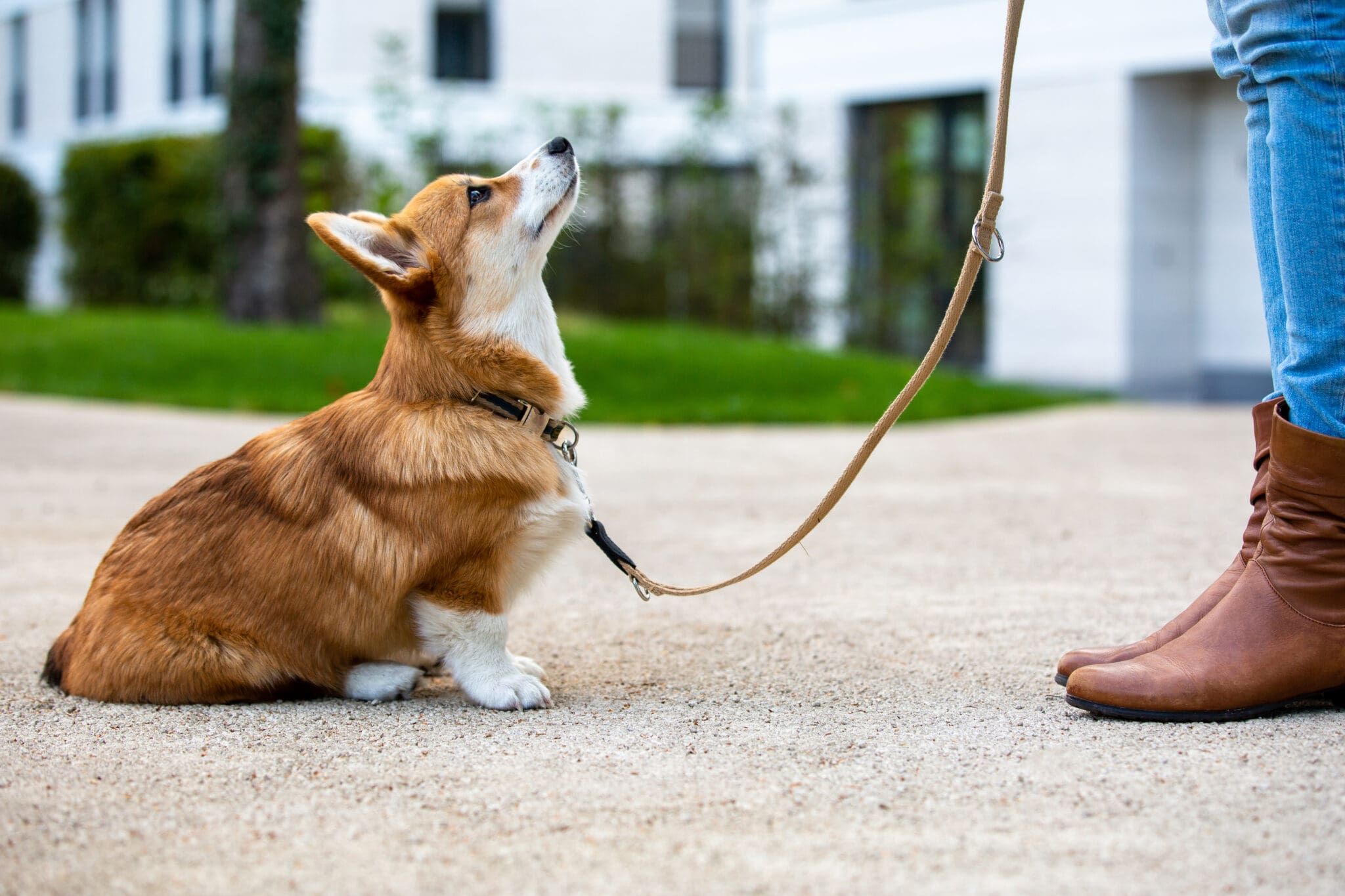Dog Training Techniques to Help Manage Aggressive Behavior in Dogs
Dog Training Techniques to Help Manage Aggressive Behavior in Dogs
Blog Article
Beginner's Overview to Successful Pet Training in your home
Efficiently training a pet dog at home needs a nuanced understanding of canine habits and efficient communication methods. Establishing clear training goals, making use of top quality rewards, and preserving uniformity across relative are important components. Furthermore, integrating training into everyday routines can enhance both interaction and retention. Nonetheless, many novice fitness instructors run into obstacles that may hinder development. To navigate these complexities properly, it's necessary to explore several essential aspects that can transform your strategy and lead to a harmonious partnership with your pet dog. What fundamental concepts should every beginner grip to ensure success?
Understanding Pet Dog Habits
Recognizing dog habits is crucial for efficient training and promoting a harmonious connection between people and their canine companions. Pets connect mainly via body movement, vocalizations, and faces, making it essential for owners to interpret these signals accurately. Identifying actions such as tail wagging, roaring, or shrinking can offer understandings into a pet's psychological state and objectives.

Common behavior problems, such as aggression, stress and anxiety, or extreme barking, commonly come from misunderstandings or unmet demands. Observing and resolving these concerns without delay can avoid acceleration and make certain a favorable training experience. By fostering a deep understanding of dog habits, proprietors can customize their training techniques to suit their canine buddies, inevitably leading to a well-behaved and pleased pet dog.
Necessary Training Devices
A well-equipped training space can substantially improve the efficiency of pet training in the house. Vital training tools make sure that both the dog and the trainer can involve in productive sessions that promote learning and bonding.

Purchasing a sturdy leash and a comfortable, well-fitting collar or harness is crucial for security and control. These devices assist develop limits and make sure the dog continues to be safe during training. Furthermore, a designated training location, without disturbances, aids concentration for both the pet dog and the trainer.
Training aids such as training pads, cones, or dexterity devices can additionally boost the experience by presenting range and difficulties. Having a note pad or digital application for tracking progress can be very useful, permitting you to note successes and areas for improvement. Making use of these necessary devices will develop a favorable training environment and learn the facts here now lay the structure for efficient discovering.
Producing an Educating Regimen
Establishing a constant training routine is important for effective pet training at home. A well-structured routine not only helps in enhancing wanted actions however also offers your pet dog with a feeling of safety and predictability. To produce an efficient training routine, begin by determining certain training objectives, such as standard commands, chain strolling, or house-breaking.
Pick a marked time daily for training sessions, ideally when your dog is alert and responsive. Procedure ought to be brief, about 5 to 15 minutes, to preserve emphasis and stop tiredness. Uniformity in timing and setting will boost your canine's knowing experience.
Include training right into daily activities to reinforce abilities. As an example, practice commands during walks or nourishment, which integrates discovering right into natural routines. Additionally, continue to be versatile and change the regular as needed, fitting your canine's power levels and mood.
Positive Reinforcement Methods
Positive reinforcement techniques are fundamental to reliable pet training, advertising wanted habits with benefits rather than penalty. This technique makes use of positive stimulations, such as deals with, praise, or playtime, to motivate pet dogs to repeat particular actions. The keystone of this approach is timing; rewards must be given quickly complying with the desired actions to develop a clear association.
When implementing positive reinforcement, it is necessary to select incentives that are encouraging for your dog. High-value treats, such as tiny pieces of chicken or cheese, can be specifically effective throughout training sessions. Additionally, differing the rewards can maintain your canine's passion and excitement.
Start with simple commands, like "sit" or "remain," and slowly development to much more complicated jobs. Consistency is essential; make sure that all relative use the very same commands and reward systems to stay clear of confusion.
Additionally, it is crucial to remain individual and avoid irritation. Pet dogs, like people, learn at their very own speed. By cultivating a supportive training setting via favorable reinforcement, you can improve your canine's learning experience while strengthening the bond in between you and your fuzzy companion, laying the groundwork for effective training results.
Usual Training Difficulties
While educating a pet dog in the house can be a fulfilling experience, it usually comes with a collection of typical challenges that this website can check both perseverance and consistency. One common issue is diversion. Pet dogs might become quickly averted by sounds, movements, and even scents in their environment, making it hard to preserve their emphasis throughout training sessions.
One more challenge is disparity in commands and reinforcement. If relative make use of different cues or benefits, it can puzzle the canine and impede progress. Developing a unified approach is essential for effective interaction.
In addition, pets can experience aggravation or stress, especially if they do not understand what is expected of them. This can bring about unfavorable actions, such as chewing or barking.
Lastly, the timing of reinforcement is crucial (Dog training). Postponed rewards can decrease the efficiency of positive reinforcement, as dogs may stop working to link the behavior with the incentive
Getting over these obstacles needs commitment, clear interaction, and a structured training plan. Recognizing and resolving these typical barriers will lead the way for a more satisfying and effective training experience at home.
Conclusion
In verdict, successful canine training at home requires an extensive understanding of canine habits and reliable interaction strategies. By establishing clear training goals and using high-quality treats alongside favorable reinforcement, the training procedure becomes a lot more fulfilling for both the dog and the trainer.
Establishing a consistent training regimen is vital for reliable pet dog training at home.Positive support methods are basic to efficient pet training, promoting desired actions through benefits instead than punishment (Dog training). By fostering a supportive training setting through favorable my latest blog post support, you can improve your pet's discovering experience while enhancing the bond between you and your furry friend, laying the groundwork for successful training outcomes
In final thought, effective pet training at home demands a thorough understanding of canine habits and effective communication strategies. By developing clear training objectives and using high-grade treats alongside positive support, the training process comes to be a lot more fulfilling for both the instructor and the dog.
Report this page